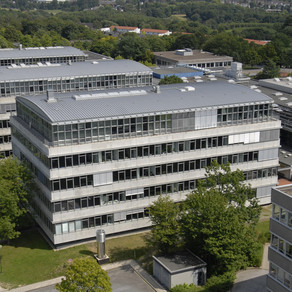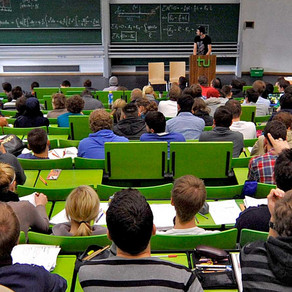Development of an urban biotope network as part of the Metropole Ruhr open space concept
The Regional Association Ruhr (RVR) is currently preparing the development of an "Open Space Concept Metropolis Ruhr" for its association area with a focus on the "Development Area Urban Landscape". The research project serves the scientific monitoring of this planning process as well as the development of innovative planning concepts and instruments on questions of urban open space and biotope connectivity. Special attention is paid to the open space demands of the population.
Occasion and initial situation
According to the will of the state government, three regional administrations are to be created by 2015, which are also to take over the tasks of the district governments and landscape associations.
The Ruhr Regional Administration, into which the current RVR is to be integrated, will then be assigned the task of regional planning. Until then, however, different experimental approaches will apply in the Ruhr region.
It can be assumed that a large part of the dense core area will be given a special position in the future system of regional planning through the currently ongoing preparation of a Regional Land Use Plan (RFNP) of the cities.
In this open situation the Regionalverband Ruhr (RVR) is preparing the elaboration of an "Open Space Concept Metropole Ruhr" with a focus on the "Development Area Urban Landscape".
The aim of the open space concept Metropole Ruhr is to influence the planning policy discussion with the help of professionally convincing open space planning concepts.
The concept serves the development of a networked open space system, which extends from the open landscape via the regional green corridors to the residential areas and is to form the strategic framework for future measures of the RVR. In contrast to many other open space planning concepts, the "Open Space Concept Metropolis Ruhr" is characterized by the fact that the carrier of the planning will at the same time be the carrier of model measures.
Against the background of current requirements, as they result from the demographic development and the migration to the outskirts of settlements, new open space planning approaches are to be developed. Due to the long-standing decline of land-intensive industries as well as the predicted demographic development, existing brownfield sites will only be needed for new uses to a limited extent or additional sites will be released. For the Ruhr area, a historically unique opportunity for expansive open space development in the metropolitan area seems to be emerging.
Objective and subject of the project
The content of the project is the scientific monitoring of the planning "Open Space Concept Metropolis Ruhr" of the RVR by the Chair LLP of the University of Dortmund. The project serves the following objectives:
- Increase of the technical quality and the innovative character of the "Open Space Concept Metropolis Ruhr" as well as improvement of its political persuasiveness and the chances of realization.
- Improvement of the human ecological living conditions in the conurbation of the Ruhr area through an urban open space network.
- Improvement of the living conditions for animals and plants in the Ruhr conurbation through an urban biotope network.
Research concept, approach and methodology
The objectives of the project are to be achieved in a 3-year work program, which can be divided into 5 modules. The modules are to be worked through in an iterative manner: Within module 1, decision bases for a spatial model of the Ruhr area "Urban Open Space and Biotope Network" will be developed. Thematically, the work is oriented towards the following functions of inner-city open spaces:
- functions for human health
- aesthetic functions (landscape and cityscape) or quality of life
- habitat function for flora and fauna
- Groundwater recharge function
- Water supply function
- runoff regulation function
- bioclimatic function
- air regeneration function
- noise protection function
- regional function
- social function of open spaces
- economic function of open spaces for properties and real estate
Based on the analysis of the current situation and its development trends, scenarios for spatial development are created (using qualitative to quantitative methods). In addition to the above-mentioned open space functions, the scenarios will be based on varying assumptions regarding other framework conditions, such as a spatio-temporally differentiated population development. In this way, the consequences of different options will be introduced into the discussion process at the RVR from a scientific point of view. Module 2 includes the evaluation of different existing planning concepts of nature conservation and open space planning in urban areas. Module 2 is closely intertwined with Module 3 (policy-enabled mission statement): The developed objectives of the policy-enabled mission statement form the basis of the evaluation in terms of an analysis of contributions of existing concepts to the implementation of the newly developed mission statement. The findings of the evaluation on existing concepts and their successes are in turn continuously introduced into the mission statement process at the RVR.
In the course of further processing, the findings from the evaluation serve as a basis for the development of new planning concepts.
The biotope network can be regarded as the central spatial guiding principle of nature conservation for the outdoor area. The idea of the biotope network made it possible for nature conservation for the first time to make area-wide justified demands from the perspective of species and biotope protection. This philosophy of the biotope network has to be adapted to the urban area. The model to be developed in Module 3 is therefore called "Urban open space and biotope network". Since urban nature and environmental protection must have a predominantly anthropocentric character, species and biotope protection cannot be the sole focus here, but must be coordinated with the complex spatial and environmental requirements of humans in the city.
The "political viability" of the mission statement to be developed in Module 3 will be ensured by involving all key stakeholders in the planning process through the organization of workshops with the affected cities.
In Module 4, several optional planning concepts for the transformation of the developed mission statement into the Metropole Ruhr open space concept are to be developed. The goal here is to ensure the highest possible implementation orientation. Several optional concepts allow a flexible adaptation to possibly small-scale changing framework conditions or also to changes in the political premises.
Within the framework of module 5, a simulation game will be developed to simulate the practical application of the planning concepts (module 4). After a development and testing phase (with students), the simulation game will be carried out with the relevant actors. The goal is to test the practicality of the developed concepts and to further increase their acceptance.
After the processing of modules 1 and 3, interim reports are prepared in each case, which contain a summary of the results as well as a work report.
Several workshops towards the middle of the project will serve to develop the overall concept as well as to provide feedback to the stakeholders from the cities of the RVR area who are relevant for the implementation and acceptance of the open space concept Metropole Ruhr.
In order to discuss the results of the project in the professional public and to include the current professional discussion in the work process, a symposium on the topic of "urban open space and biotope network" will be organized as a conclusion.
Following the project, exemplary measures are to be implemented and also scientifically accompanied.
Research questions
There are basically two spatial options for the development or improvement of an urban open space and biotope network system:
- An increase in open space through the development of brownfields
- Modification measures in the existing stock
Both strategies are interrelated, since quality deficiencies can be compensated by an increase in open space, just as - typical for agglomerations - a quantitatively low supply of open space can be partially compensated by high qualities.
The withdrawal of land-intensive industries in the Ruhr region and the demographic development forecast for the future ensure that there will continue to be large inner-city land potential in the future. The existing and emerging potential on brownfield sites will be a core element of the strategy for an urban open space and biotope network. The spatially differentiated elaboration and evaluation of development scenarios will therefore also refer to the development of brownfield sites in addition to other types of open space.
With regard to species and biotope protection, it will have to be clarified under which conditions multifunctional open spaces in urban areas can at all fulfill the function of a biotope network - also in the sense of the coherence of the Natura 2000 network - or when a functional network can be concluded from a spatial connection. In order to be able to take specific measures for the optimization of the biotope network axes, it is necessary to define which species should be able to spread along a biotope network axis and which type or structure of land use in a biotope network axis hinders or favors its function.
The theories and concepts of species and biotope protection relevant to this question, such as island theory, MVP concept, metapopulation and mosaic cycle concept, have basically been developed for open spaces outside cities and urban agglomerations. They have to be adapted to the conditions of an urban-industrial agglomeration.
Due to the high importance of the recreational function of urban open spaces, there is often an internal conflict between species and biotope protection (biotope network system) and (urban) landscape-related recreation (open space network system) when species worthy of protection occur. This conflict has to be differentiated, evaluated and proposals for its solution have to be developed. The basic thesis is that humans are the leading species in this type of space, so that the primary goal is to improve the human-ecological habitat conditions.
In this context, the advantages and disadvantages of different forms of coordination, such as the principle of negative coordination, coordination through the involvement of affected parties, heuristic coordination or scientifically based coordination via multi-objective optimization, will also have to be discussed.
Research sponsor: German Federal Environmental Foundation (DBU)
Duration: 01.01.2007 - 31.12.2009 (36 months)
Researcher:
- Univ.-Prof. Dr. Dietwald Gruehn
- Dipl.-Ing., Ass. d. L. Roland Finke
- Dipl.-Ing. Sven Rannow
Cooperation partner: Ruhr Regional Association (RVR)






